Large companies are throwing away roughly $400 billion (£258 billion) a year on digital and analytic business transformations that fail to deliver what they promise. According to a study from Genpact, more than two thirds of digital transformation projects entered into fail to meet expectations. Problems aligning communication between IT and business teams is cited as the central issue for implementation failure, with legacy integration and talent earmarked as other major bottlenecks.
As it stands, the report suggests that at best only “some benefits” are gained from the current implementation of digital and analytic transformations. The project failures come with a hefty price tag, estimated to total a waste of £258 billion a year. “The billions of pounds poured into the technology is often failing to provide the benefits expected from the technology,” write the authors.
The report presents a number of reasons for poor ROI from digital and analytics projects within the firms. Slightly less than a third cites poor communication between IT and business teams as an issue for the implementation of business transformations processes. A lack of business intelligence tools, legacy processes and systems unable to collect relevant data and a lack of access to talent was cited by another third of respondents.
Lawyers with strategic project skills reduce risks for their clients
Can a lawyer play a role in reducing this risk for organisations? If lawyers with strategic project management and leadership skills are seen more generally as a project resource that can be deployed for the life cycle of a project, can they play a role in improving communications between IT and business teams, and improve business intelligence of project teams and ensure consistent and uniform communication that aligns with the contractual rights and obligations set out in the contract terms? So often left until further down the track, legal issues are much more effectively addressed up-front and as part of the project strategy. This is where lawyers with strategic project skills come in to their own.
Traditionally, the role of a lawyer on a large technology implementation project is limited to:
1. negotiating and drafting the legal terms of the contracts between the parties; and
2. providing advice in the event of a dispute between the parties (usually after significant amounts of money are in dispute and there is a high risk of significant business interruption and loss of opportunity on the expected benefits of the implementation).
At CIE Legal, we believe this model is inherently reactive and exposes organisations to many risks (and therefore, usually, potential costs) that could be mitigated or avoided with the right advice given at the right time. A good technology lawyer is one who is there with you for the journey, from inception through to execution and delivery of the solution. At CIE Legal our technology lawyers don’t just draft contracts, and our role is not done once we have drafted the terms of a contract. We play our part in helping our clients make the contract happen in an effective and sustainable way.
To provide a complete solution, we believe our obligations should extend beyond the traditional model.
We can provide a range of services through the life cycle of a project that can mitigate or avoid many of the issues typically faced by organisations when seeking to implement a large technology transformation project. Our lawyers understand from practical experience how technology projects are run, we understand project management methodologies and can act as a trusted advisor and “interpreter” between the various project teams to ensure legal issues and risks are dealt with at the right time to deliver a better result for organisations.
Step 1 – Project strategy and business requirements
By understanding what an organisation is seeking to achieve in implementing a technology transformation, our lawyers can obtain key insights into the risks that might be faced in its implementation and can address those risks up-front. Is the implementation simply replacing an existing legacy system with a better, more efficient project? Or is it seeking to implement new business processes and systems, of which the organisation might not be fully aware of what is required? Is the project a complete end to end solution, or to what extent will it still be required to integrate with existing legacy systems?
By being involved in the strategy phase of a project, a lawyer can quickly and efficiently identify the key risk items that need to be addressed in the contract documents and, following that, the risk areas that are likely to affect its scheduled implementation.
For example, if a project seeks to implement new business processes and allow for new interactions with customers, that organisation may not be fully aware of what the associated risks are in respect how these risks are reflected in the business requirements or scoping documents. It will therefore be more reliant on the IT services provider and/or the software licensor to understand how these requirements are scoped and defined. This reliance, and the corresponding obligation on the service provider, needs to be reflected in the contract documents so as to not impose responsibility solely on the organisation to have these developed at the date the contract signed. In our experience, organisations often find themselves contractually responsible for these obligations, even though they are reliant on the insight and expertise of the service provider.
Another area that is often overlooked in technology contracts is the integration of the new software with legacy systems. Legacy system integration and data migration activities are often key risk areas in large system implementations. Our lawyers can assist in understanding this risk, and ensure continuity of existing business services during a large implementation, while at the same time ensuring there are appropriate contractual safeguards to ensure such continuity.
Step 2 – Choosing an IT service provider
Many large system implementations are put to tender, which require prospective service providers to propose contract documents for the project implementation. By having our lawyers involved in the selection stage of project, we can provide advice on the contracting position of prospective providers, and advise on the extent to which they are aligned with the key risks that apply to the project. To the extent some service providers may, on all other accounts be seen as equivalent, a provider who is aware of and accounts for the relevant risks in their base contract documents from a legal perspective, may reduce the length and cost of negotiating the contract terms.
Our lawyers also have experience in dealing with many large IT companies and service providers. We have developed an understanding of what reflects “industry practice” and what are “standard contracting terms” that are usually put to organisations. With our experience, we have a deep understanding and awareness of what reflects “market standard” position, and how such contracts can be negotiated with each service provider to deliver the best outcome for our clients.
Step 3 – Drafting and negotiating a good technology contract
What makes a good technology contract depends on the specific requirements of what is sought to be implemented. Traditional risk areas, such as warranties, limitations in liability and indemnities are often dealt with too generally to deliver real benefit to the risks faced by organisations. By understanding the particular risks of the project, we can better provide bespoke advice on the negotiation and drafting of the key terms of the contract, including the schedules and annexures to the documents containing the commercial terms of the agreement.
Negotiating a contract with a clear understanding of the commercial and business risks of the organisation, allows a contract document that is used and relied upon by the parties during the life cycle of the project (as opposed to one that is ignored and put in the drawer to gather dust while issues arise).
The issues concerning decision making and approval on key issues like delays, acceptance of root cause analysis, scope increases and defects/testing acceptance can be dealt with in advance in the contract documents, to ensure that there is clear and transparent understanding on how these issues are to be dealt with during the life cycle of the project.
Step 4 – Implementation and project management services
Organisations traditionally view a lawyer’s role on a large technology as being discharged once the contract documents have been signed. However, in our experience, some of the biggest legal risks arise after the contract is signed during the course of the project implementation phase. Without proper management and oversight of these risks, project communications and approvals given during the implementation phase of a project are often inconsistent with, or at best ambiguous, when compared with the language used in the contract documents and the rights and obligations of the parties. This can lead to project delays and, at worst, develop into disputes.
Over the course of a large system implementation project, these inconsistencies greatly increase the risk of disputes arising and, in the event of a dispute, can significantly affect the rights of the organisation to recover from a service provider. Issues that are commonly dealt with and decided on a large project without legal input include:
- extensions and delays, including acceptance of root cause analysis for such delay (i.e. apportionment of liability for the delay)and ensuring the root cause doesn’t happen again
- scope increases and the acceptance of change requests, including change requests arising from delays;
- acceptance of changes to resource requirements and project schedules; and
- final acceptance of software and test results.
By having a lawyer who has experience of how large technology projects operate as well as legal expertise to understand and interpret the contract documents, organisations can:
- improve the clarity of communications between the project teams, and ensure there is clear and consistent communication between the technical delivery team, the business units and the project management team that is consistent with the language used in the contract documents;
- ensure decisions made in project steering committees are consistent with the legal positions negotiated in the contract document;
- early identification of issues that could result in legal disputes and mitigating legal risks that could arise from decisions made by the project team.
Large technology consultants and service providers (such as IBM and Accenture) have dedicated legal/contract management teams that will be responsible for protecting the service providers interests in relation to the delivery of services. Many organisations without a large in-house legal function are often exposed and “out flanked” as their project teams are not resourced to have the input of a lawyer to understand the issues having regard to the rights and obligations under the contract documents.
Step 5 – Warranty fixes and support services (meeting KPI’s)
A good IT legal adviser won’t simply walk away once the project is signed. They will work as part of the team to ensure effective transition and handover. Certain aspects of this process are legal in nature and it’s important to achieve them in a timely way, to support a smooth transition. Acceptance and warranty periods and bug fixes and support costs are two such areas
Any project requires careful leadership, management and communication. In an enterprise IT project, the costs and risks are high. By addressing legal risks early and strategically, lawyers with experience of these strategic projects, who understand the process and how IT providers operate, can help their clients to achieve results on quality, time and budget.


